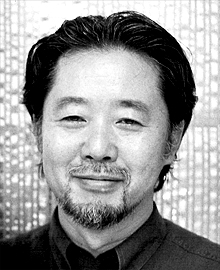
Message of Chairperson 2007

Chairperson of the Jury
Hiroshi Naito
Maturation and Youthful Expansion
This year, the Good Design Award system takes its fist step in a new era after commemorating a fifty-year history. The awards give us a sense of how we are standing on the shoulders of giants. In retrospect, they have always captured the essence of current economic and cultural developments for the general public, from Japan's postwar recovery through the period of rapid economic growth.
People around the world can appreciate how the awards bring together the best examples of good design through the years. We can also appreciate the insight and foresight of the screening committee, whose choices have been right on target. As we uphold their tradition of discerning judgment, we now encourage even more in-depth committee discussions, starting this fiscal year. Adapting to a new age of advanced, information-oriented societies means raising the bar for the quality of our screenings. To do it, we must ensure greater transparency in our processes and gain a fuller vocabulary to discuss "design." Much work remains, but generally, we are making progress in improving screenings and evaluation.
Results from this year's screening suggest two trends.
First, in the evolution of information technology, we seem to have reached a stage of maturity. Now that a true sense of innovation in information technology is a fading memory, manufacturers are putting greater emphasis on understanding user needs and desires from psychological standpoints, which has become a focus of design. We might say that design has come of age. But to put it another way, design has lost its youthfulness. How can we keep information technology dynamic as it matures gracefully? I anticipate that this will be a key design theme over the coming years.
In fact, unlike maturation, the other design trend is to show youthful vigor in product development. This year's screening was notable for the enthusiasm evident in overseas entries, particularly from Korean companies. There were a few amazing examples of this youthful expansion-dynamic design efforts that win the hearts of users, building on design as a cornerstone of corporate strategy. In this, there is a fresh, positive energy and vivaciousness.
These two fundamentally different tendencies, toward maturation and dynamic product development, stimulate each other and drive new design. I hope that Japanese design will also take these trends into account as designers establish clear strategies with the next generation firmly in their sights.
